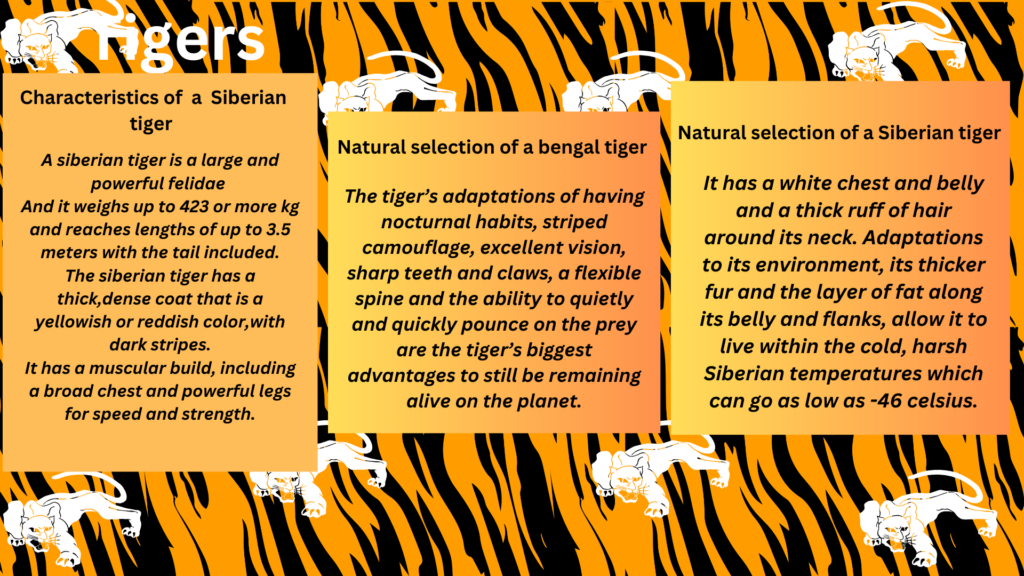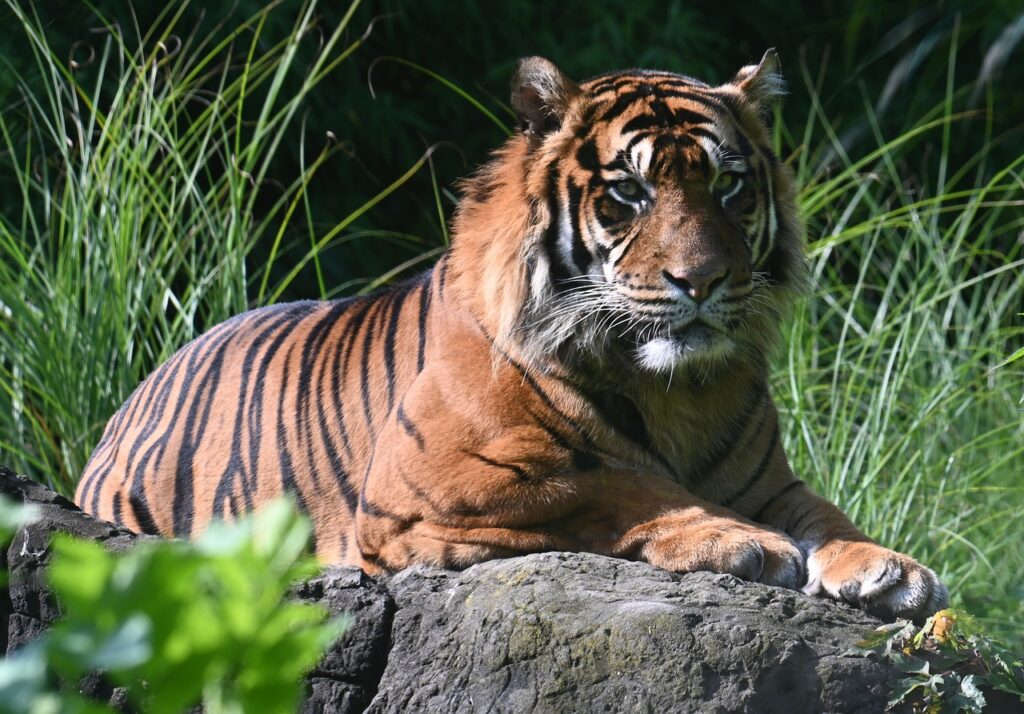Bengal tiger
What is the animal’s habitat?
The habitat of a bengal tiger is primarily the dense forests and grasslands of the Indian subcontinent,including parts of India, Bangladesh and Nepal. They are particularly known for their association with the Sundarbans,a large mangrove forest on the Ganges Delta . In these environments Bengal tigers establish territories near water sources and use the cover of vegetation for both hunting and protection.
How has the animal adapted to its habitat?
The bengal tiger has a tawny,yellow-orange coat with black stripes that gives the bengal tiger excellent camouflage in its forested habitat.
The dark stripes help them blend in with the shadows and it makes it approach the prey undetected.
Bengal tigers are primarily nocturnal hunters. This helps them have a great advantage to hunt their prey at night .
1 Physical characteristics
A bengal tiger’s physical characteristics are that they have a tawny to orange brown coat with black stripes that vary in thickness and length.
It can also reach up to 3.3 meters and weigh up to 230 kg .
They also have exceptionally strong teeth which lengths from 7.5 to 10 cm
The bengal tiger also possesses strong legs and muscular shoulders,which allow it to run at high speeds and possess formidable power.
Natural selection
The tiger’s adaptations of having nocturnal habits, striped camouflage, excellent vision, sharp teeth and claws, a flexible spine and the ability to quietly and quickly pounce on the prey are the tiger’s biggest advantages to still be remaining alive on the planet.
Siberian tigers
What’s the animal’s habitat?
The habitat of the Siberian tiger is mainly the dense boreal forests in the Russian far east and northeastern China. These tigers are also known as Amur tigers,named after the Amur river basin where they predominantly reside. They have adapted to colder climates and can be found in areas that also support other wildlife like ussuri brown bears and Siberian leopards.
How has the animal adapted to its habitat?
The Siberian tiger has a thick,dense coat of orange–black fur with narrow black stripes. Because of this they are able to live in the cold.
Siberian tigers are the largest of the tiger subspecies,with males weighing up to 450 kg or more. This large size helps maintain their body temperature in cold environments by lowering the surface to volume ratio.
2 Physical characteristics
A siberian tiger is a large and powerful felidae
And it weighs up to 423 or more kg and reaches lengths of up to 3.5 meters with the tail included.
The siberian tiger has a thick,dense coat that is a yellowish or reddish color,with dark stripes.
It has a muscular build, including a broad chest and powerful legs for speed and strength.
Natural selection It has a white chest and belly and a thick ruff of hair around its neck. Adaptations to its environment, its thicker fur and the layer of fat along its belly and flanks, allow it to live within the cold, harsh Siberian temperatures which can go as low as -46 celsius.


About the Author

Ethan Lucas Mendelebar is a young child at the age of 11 who enjoys the subject, English.
He also loves reading books and his favourite types of books are, horror, fantasy and events that happened in real life.
He also finds comprehension fun and interesting and that’s one of his favourite things to do in English.

